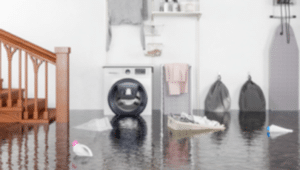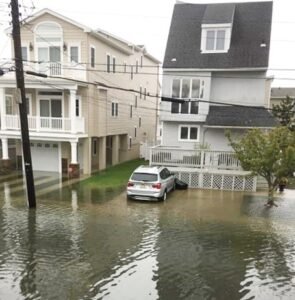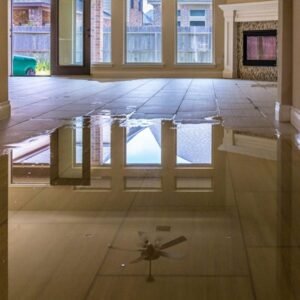Understanding the Importance of Prompt Water Damage Cleanup
Water damage can occur suddenly and without warning, and it can have devastating effects on your property. Whether it’s from a burst pipe, a leaky roof, or a natural disaster, excess water can lead to mold growth, structural damage, and even health hazards. That’s why it’s crucial to act fast when dealing with water damage and clean it up as soon as possible.
Step 1: Assess the Damage and Stop the Source of Water
The first step in cleaning up water damage is to assess the extent of the damage. Check the affected areas for standing water, dampness, and visible signs of mold or mildew. If the water is coming from a leaky pipe or appliance, turn off the water supply to prevent further damage. In case of flooding, make sure to turn off the main power supply before entering the affected area.
Step 2: Remove Standing Water
Standing water can cause significant damage to your property and promote mold growth. Use a wet/dry vacuum or a pump to remove as much standing water as possible. If the affected area is large, it’s best to hire a professional water damage restoration company to handle the extraction.
Step 3: Dry Out the Affected Area
After removing the standing water, the next step is to dry out the affected area. This can be done using dehumidifiers, fans, and open windows to improve air circulation. If the weather allows, open doors and windows to let fresh air in and speed up the drying process. It’s essential to dry out the area within 48 hours to prevent mold growth.
Step 4: Remove Damaged Items
Unfortunately, not all items can be salvaged after water damage. Any items that are heavily damaged or contaminated with sewage water should be disposed of properly. Make sure to wear protective gear, such as gloves and a mask, while handling contaminated items.
Step 5: Disinfect and Clean the Affected Area
After removing damaged items, it’s crucial to disinfect and clean the affected area thoroughly. Use a mixture of water and bleach or a commercial disinfectant to kill any bacteria and mold spores. Wipe down all surfaces, including walls, floors, and furniture. Make sure to dry everything completely after disinfecting.
Step 6: Monitor for Mold Growth
Even after thorough cleaning and disinfecting, there’s still a risk of mold growth. Keep an eye out for any signs of mold, such as a musty smell or visible growth. If you notice any mold, it’s best to call a professional mold remediation company to handle the cleanup.
Clean Up from Water Damage: Tips and Precautions
Wear Protective Gear
When cleaning up water damage, it’s crucial to protect yourself from potential health hazards. Wear gloves, a mask, and protective eyewear to avoid direct contact with contaminated water and mold spores.
Don’t Use Electrical Appliances
Avoid using electrical appliances in the affected area until it’s been thoroughly dried and inspected by a professional. Water and electricity don’t mix and can lead to electrocution or other hazards.
Dispose of Contaminated Materials Properly
Any items that have been heavily damaged or contaminated with sewage water should be disposed of properly. Don’t try to salvage these items, as they can pose health risks.
Consider Hiring a Professional Restoration Company
While it may be tempting to handle water damage cleanup on your own, it’s best to hire a professional restoration company. They have the expertise, equipment, and experience to handle the cleanup effectively and prevent further damage.
Cleaning Up Water Damage: Preventing Future Damage
Inspect and Maintain Your Property Regularly
The best way to prevent water damage is to be proactive and inspect your property regularly. Check for any leaks, cracks, or other signs of water damage and address them promptly.
Upgrade Your Plumbing and Appliances
Old or faulty plumbing and appliances can lead to water damage. Consider upgrading to newer, more efficient models to prevent potential disasters.
Install a Sump Pump
A sump pump can help prevent flooding in your basement by pumping out excess water. Consider installing one if your property is prone to flooding.
Have a Plan in Place
In case of a natural disaster or sudden water damage, it’s crucial to have an emergency plan in place. This can help you act quickly and minimize the damage to your property.
Conclusion
Water damage can be a stressful and overwhelming experience, but with prompt and proper cleanup, you can minimize the damage and prevent future issues. Remember to always prioritize your safety and consider hiring a professional restoration company for thorough and effective cleanup. By following these steps and taking preventive measures, you can keep your property safe and free from water damage.



